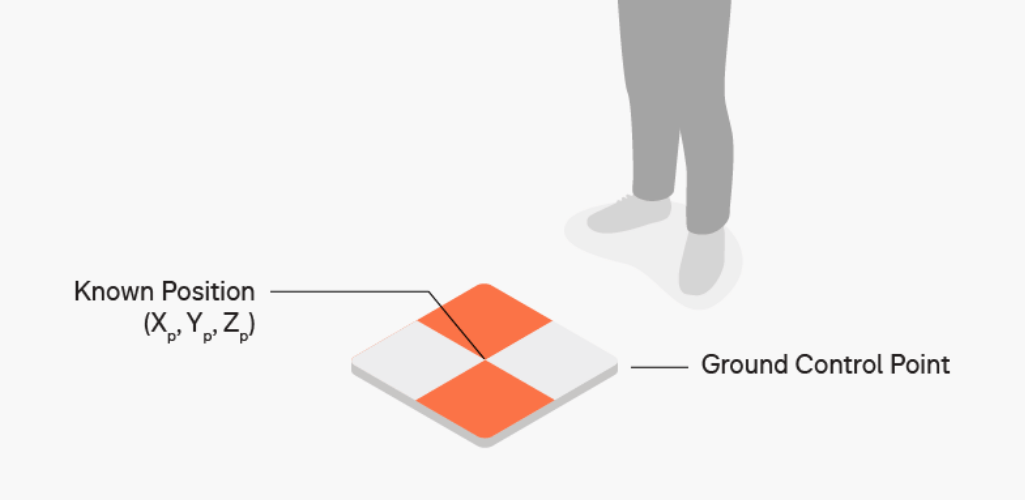A guide to ground control points for surveying. Find out what they are, how to place them and how they increase the accuracy of your surveying applications.
What Are Ground Control Points (GCPs)?
Ground Control Points (GCPs) are noticeable spots with known coordinates on the ground in your area of interest.
 Ground Control Points (GCPs) are clearly visible markers with known coordinates on the ground. They serve as reference points to align photogrammetric or LiDAR data with a chosen coordinate system, ensuring high-precision drone mapping.
Ground Control Points (GCPs) are clearly visible markers with known coordinates on the ground. They serve as reference points to align photogrammetric or LiDAR data with a chosen coordinate system, ensuring high-precision drone mapping.
Why Are GCPs Important?
GCPs enhance the accuracy of aerial mapping by providing absolute positioning accuracy. Even with advanced drone technologies like Real-Time Kinematic (RTK) or Post-Processed Kinematic (PPK), surveyors still benefit from using GCPs to verify and refine their results.
Requirements for Ground Control Points
 To be effective, GCPs must meet several criteria:
To be effective, GCPs must meet several criteria:
Visibility: GCPs must be clearly visible in aerial images. A high-contrast, checkerboard design is recommended.
Size: Typically, GCPs should be about 0.5m x 0.5m (2ft x 2ft).
Stability: Ensure GCPs are firmly secured so they remain stationary during data collection.
Even Distribution: Place GCPs strategically throughout the survey area for optimal coverage. How to Place GCPs for Maximum Accuracy
How to Place GCPs for Maximum Accuracy
The number and placement of GCPs depend on the size and topography of the survey site. Follow these guidelines: Use at least three GCPs per survey.
Use at least three GCPs per survey.
Distribute GCPs evenly, placing one in each corner and one in the centre.
In areas with significant elevation changes, place GCPs at both high and low points.
Ensure GCPs remain unobstructed by vegetation or structures.
 Measuring GCP Positions
Measuring GCP Positions
After placement, measure the precise coordinates of each GCP using an RTK or PPK-enabled GNSS receiver, such as:
RTK/PPK Receivers
DJI D-RTK 3
 To measure accurately:
To measure accurately:
Position the GNSS receiver pole at the centre of the GCP.
Ensure the pole is level and note its height to factor into calculations.

Understanding Ground Sample Distance (GSD)
Ground Sample Distance (GSD) is a key metric in drone surveying, representing the real-world distance between two adjacent pixels in an image. For example, a GSD of 5 cm/px means each pixel corresponds to 5 cm on the ground. Accurate GSD calculations are essential for converting drone data into precise maps.
 GCPs vs. Manual Tie Points
GCPs vs. Manual Tie Points
While both GCPs and manual tie points (MTPs) are used in drone mapping, they serve different purposes GCPs provide absolute accuracy by matching real-world coordinates.
GCPs provide absolute accuracy by matching real-world coordinates.
MTPs help with relative accuracy, aiding in image alignment but lacking real-world coordinate verification.
Conclusion
For survey-grade accuracy, using GCPs is a must. While RTK/PPK-equipped drones reduce the number of GCPs needed, they do not eliminate the need entirely. Proper placement and measurement of GCPs ensure precision, making drone surveying more reliable and efficient.


Share:
Top 10 Best Selling Drones, ROVs, Robotics & More!
What Is the Minimum Range for Cerulean Sonar Omniscan 450 Side Scan Sonar?